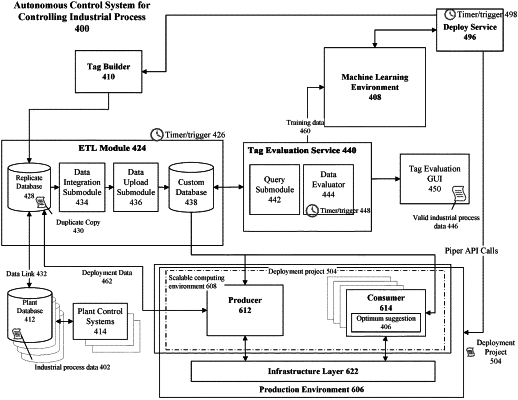| CPC G05B 13/0265 (2013.01) [G05B 13/042 (2013.01); G06N 3/08 (2013.01); G06N 3/126 (2013.01); G06N 5/04 (2013.01); G06N 20/00 (2019.01)] | 20 Claims |

|
1. A computer implemented method for controlling industrial process, comprising:
deploying a forecast model to a production environment to predict an optimal suggestion for controlling an industrial process, wherein the forecast model is deployed with a set of model training configurations that can be used as a single point of truth for guiding training versions of the forecast model using a model training algorithm without human input;
deploying a first version of the forecast model trained using the set of model training configurations to predict optimal suggestion for controlling the industrial process;
monitoring the performance of the first version of the forecast model on current industrial process data of the industrial process;
if the performance of the first version of the forecast model becomes unsatisfactory, retraining a second version of the forecast model on current industrial process data with the set of model training configurations as a single point of truth for guiding the forecast model training using the model training algorithm without human input;
deploying the second version of the forecast model to replace the first version of the forecast model to predict optimal suggestion for controlling the industrial process with the set of model training configurations;
wherein deploying a version of the forecast model to predict optimal suggestion for controlling the industrial process comprising using an optimization search algorithm to search through the dynamic space of the forecast model to arrive at an optimal set of control parameters for controlling the industrial process to achieve one or more operation objectives.
|